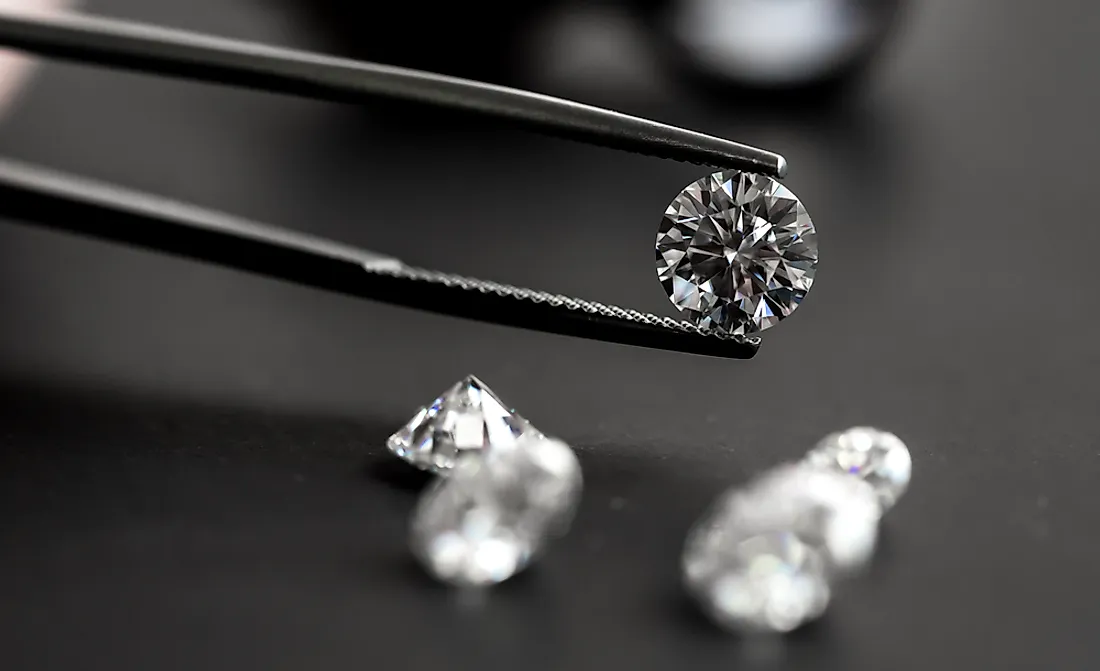The World's Hardest Minerals

Minerals exist in different forms on earth, and their respective compositions give each mineral its characteristic hardness. There are two common ways used by scientists to establish the hardest minerals on earth; the Vickers hardness test and the Mohs scale. Each of the two methods uses a formula to determine the hardness of a mineral. Diamonds have been established to be the hardest minerals on earth, and are recognized as such in both the Mohs scale as well as the Vickers hardness test.
The Mohs Scale
The Mohs scale outlines the hardest minerals on earth. The scale is named after its inventor, Friedrich Mohs, a renowned 19th-century German mineralogist who introduced the scale in 1812. The formula used to establish the position of a mineral on the scale is its ability to scratch another mineral, and the scratches have to be visible to the naked eye. However, modern technology has shown that the formula has some discrepancies, with some minerals classified lower on the scale having been observed making microscopic scratches on minerals found above them on the Mohs scale. The scale of hardness progressively moves from 1 to 10 where 10 represents the hardest mineral and hardness reduces as one moves down the scale. Top on the scale of hardness is the mineral ranked at 10, the diamond which is not scratched by any other mineral. The second-hardest mineral based on the Mohs scale is Corundum which can only be scratched by diamonds. The scale of hardness is often criticized for its lack of precision, but its application is still popular among field geologists.
Vickers Hardness Test
Another way of establishing the hardest minerals on earth is using the Vickers hardness test. The test was introduced by Robert Smith in 1921 after developing it at Vickers Ltd, the company after which the test is named. The Vickers test is more exhaustive in assessing the hardness of minerals since it can be used on all metals. Vickers Pyramid Number, abbreviated as “VH,” and Pascal units are used as units of hardness in the test. Establishing the hardness of a mineral using the test is determined by its resistance against plastic deformation from a particular source. The hardest mineral according to the test is the diamond which has the highest HV value of any mineral, having 10,000 HV. The mineral with the second-highest HV value is martensite, with 1,000 HV and is, therefore, the second-hardest mineral on earth.
Diamonds
The crystalline perfection and purity of diamonds affect their hardness, where the purity of a diamond is directly proportionate to its hardness. Diamonds are among the oldest of all minerals, with some natural diamonds being almost as old as the planet since they can be as much as 3.5 billion years in age. The molecular structure of diamonds is the reason behind their hardness, as carbon atoms that make up a diamond are connected to each other to form a lattice structure. A molecule in diamonds is made up of five carbon atoms which are connected to each other to create a strong tetrahedral unit, which results in a strong molecule and the source of the hardness of the diamond.











